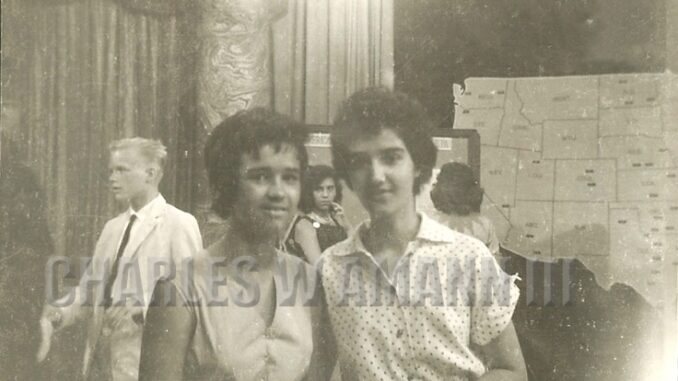
“Who were those sisters who always moved like they were dancing for their family back home?”
In the dazzling world of American Bandstand, where rock ‘n’ roll ruled and teen idols swayed across black-and-white screens, a pair of sisters brought something deeper to the floor — a blend of grace, culture, and family pride. Carmen and Sylvia Jimenez, affectionately known as The Jimenez Sisters, stood out not for the volume of their presence, but for the richness they carried in every step.
A Dance Rooted in Identity
Carmen and Sylvia came from a vibrant Latino family living in Philadelphia. As first-generation Americans, they carried the rhythm of their heritage in their blood — the syncopation of boleros, the passion of salsa, and the steady beat of American rock.
Unlike some dancers who leaned toward style or fame, the Jimenez Sisters danced like they were holding onto something sacred. For them, the stage of Bandstand wasn’t just a performance — it was a celebration of identity.
You could always tell they were close. Even when not dancing together, they moved with the same instincts, the same calm strength. Carmen was slightly more outgoing, while Sylvia exuded a quieter confidence. But together, they were magic.
Breaking Quiet Ground
At a time when national television rarely showcased diverse faces, the Jimenez Sisters brought visibility — not through protest, but through presence.
Their participation wasn’t always easy. The spotlight often favored certain “looks,” but Carmen and Sylvia didn’t fade into the background. Instead, they stood their ground with dignity. Their style was classic, their expressions sincere, their steps authentic.
“They made my daughters believe we had a place on that dance floor, too,” a viewer from San Antonio once wrote.
They weren’t trying to be anyone else. They danced for themselves, for each other, and for every family that saw them and felt seen.
Carmen Today: Holding On to Her Rhythm
After Bandstand, Carmen continued to dance — not always on stage, but always with heart. She became deeply involved in youth arts programs throughout the 1970s and 80s, especially those focused on cultural identity and expression. She led workshops, choreographed school shows, and helped young girls find power in movement.
“Carmen had this energy that just made people feel welcome,” said a former student. “She made you believe your story mattered.”
She never forgot where she came from — and in every step she taught, a bit of her family’s rhythm lived on.
Sylvia’s Quiet Legacy
Sylvia chose a quieter life, but no less meaningful. She focused on family and community. She was active in her church, often helping with music and outreach events, and was known for being the calm anchor in her circles.
She and Carmen remained close over the years — writing letters, visiting when they could, and reminiscing about the dance floor they once shared. They may have stopped dancing on TV, but their rhythm remained in how they lived.
What They Left Us
The Jimenez Sisters may not have had a feature story every week, but they offered something rarer: the quiet revolution of simply showing up as they were.
They taught us that representation didn’t always need a headline. Sometimes, it’s enough to dance. To hold space. To keep showing up with joy.
Their legacy lives in the daughters and granddaughters who still watch clips of Bandstand and point to the screen saying, “That could be me.”
Did you grow up watching Carmen and Sylvia dance? What did they mean to you or your family?
📝 Share your story with us here:



